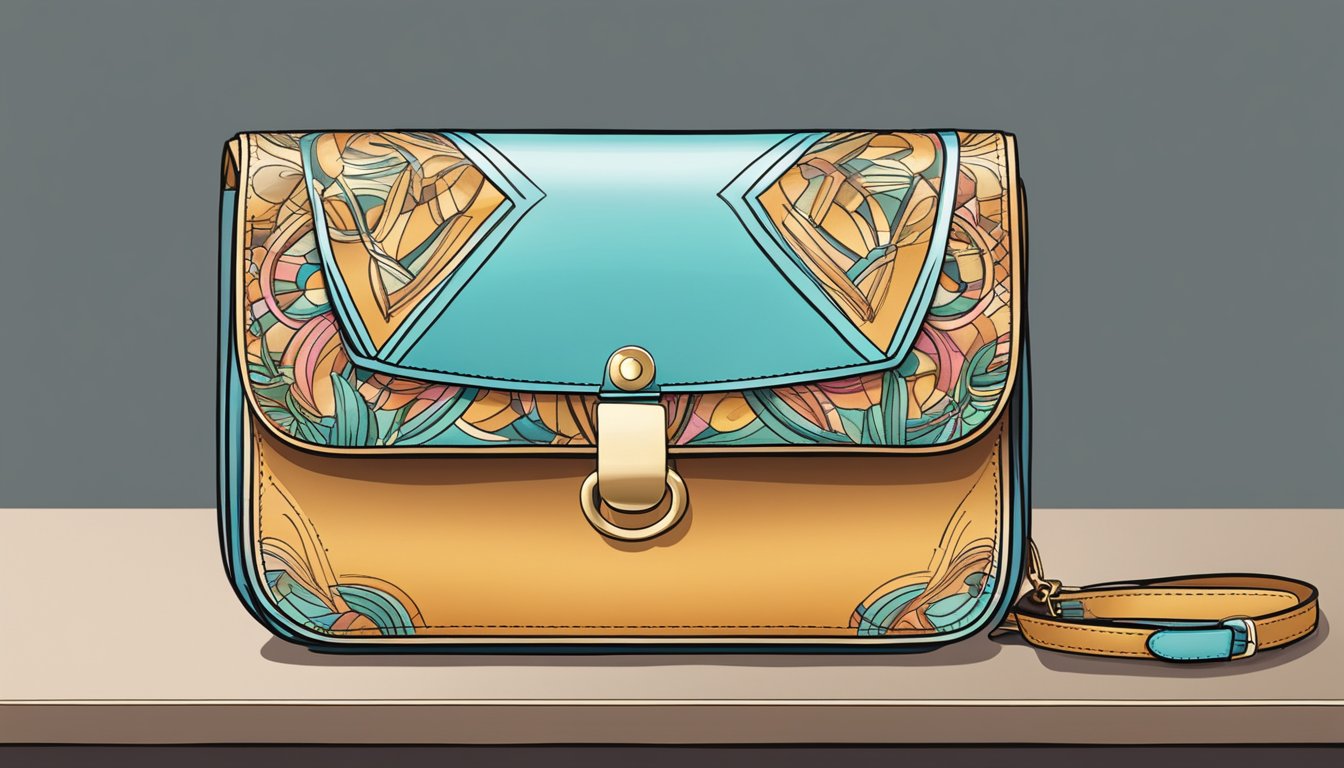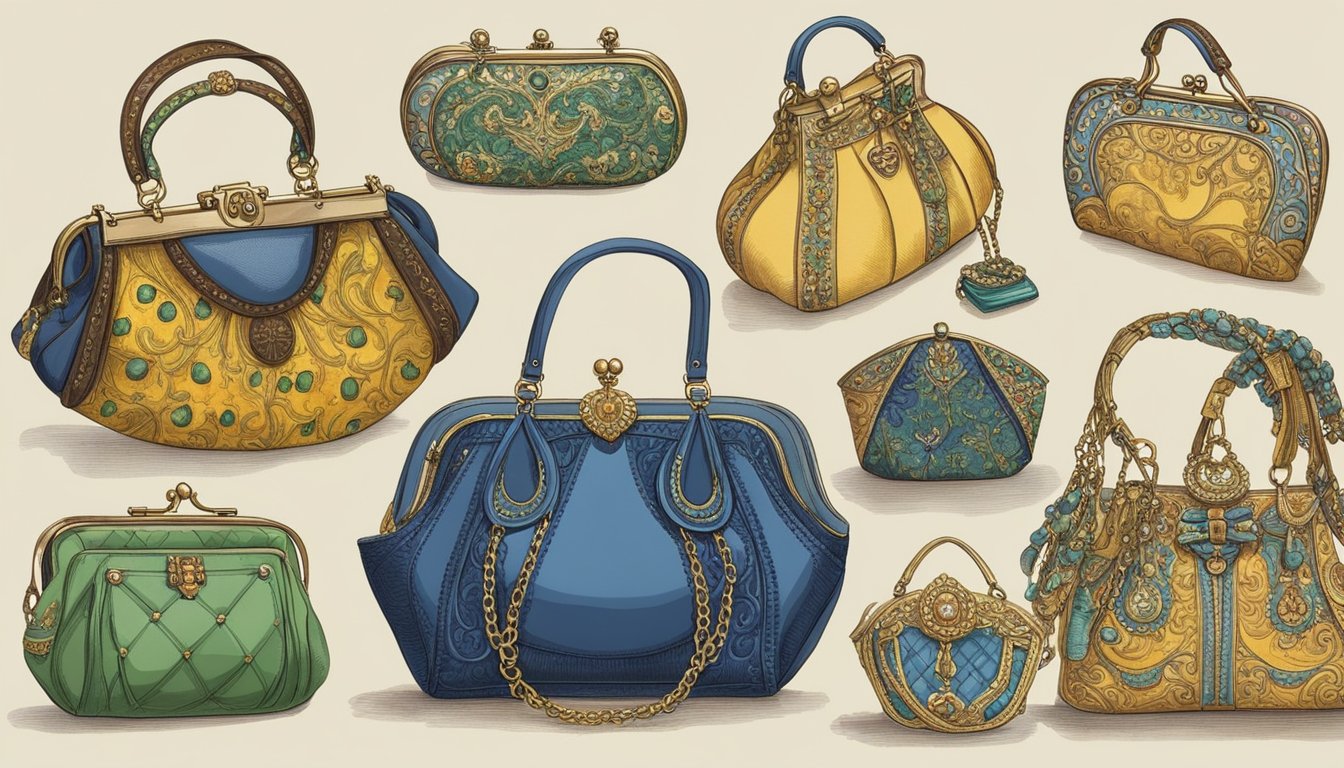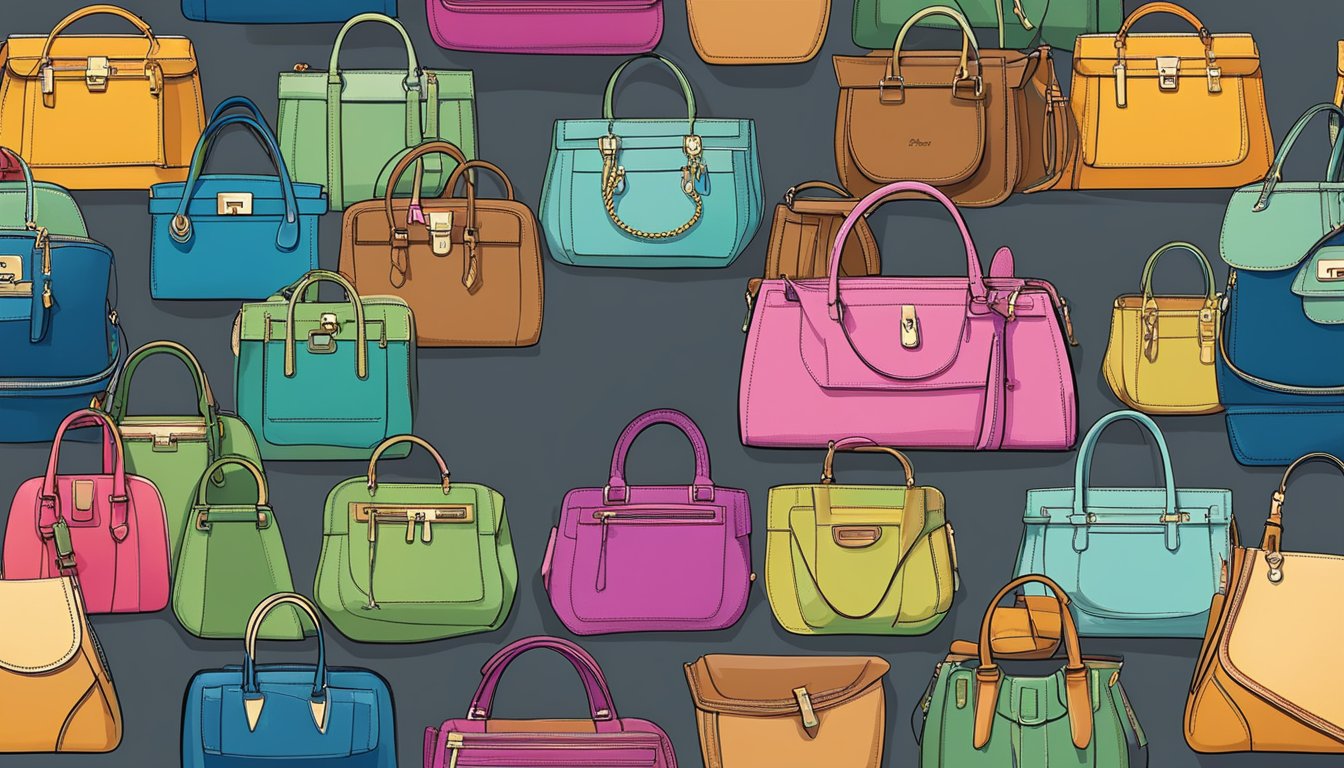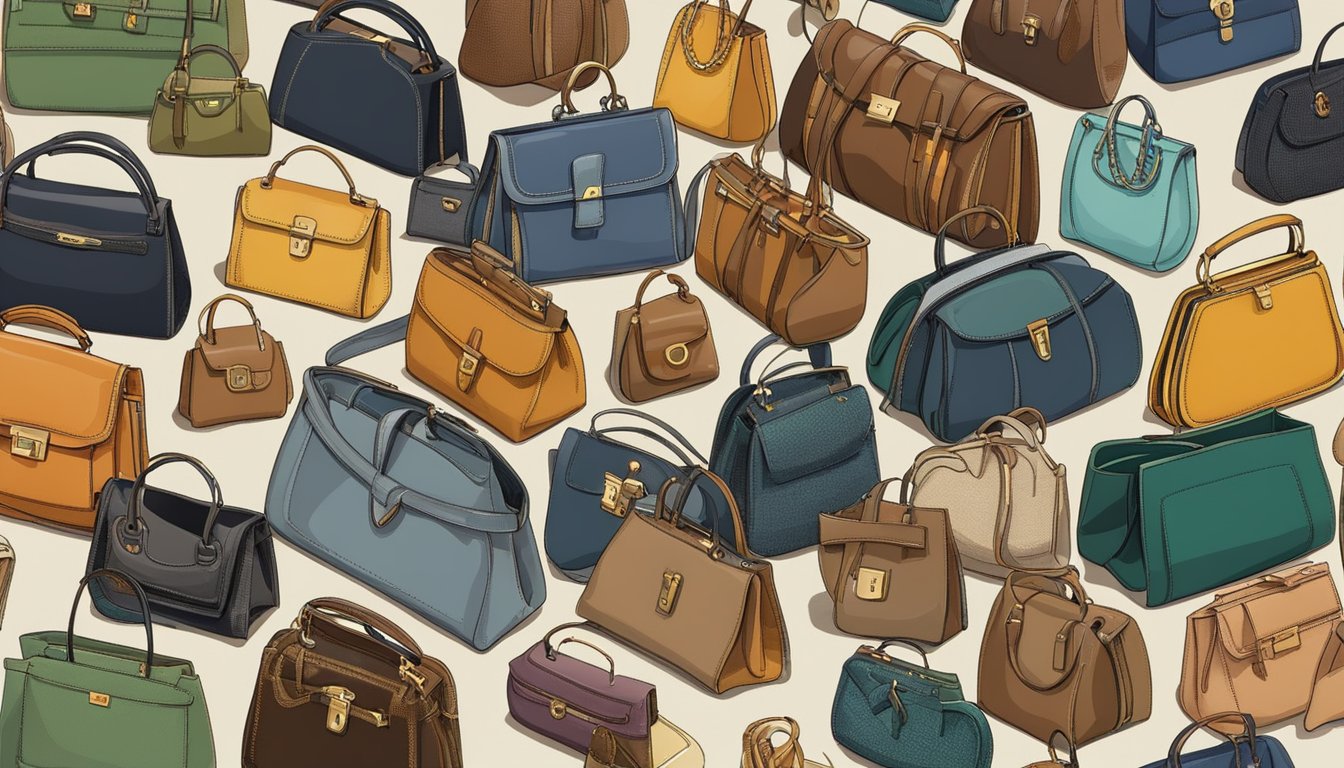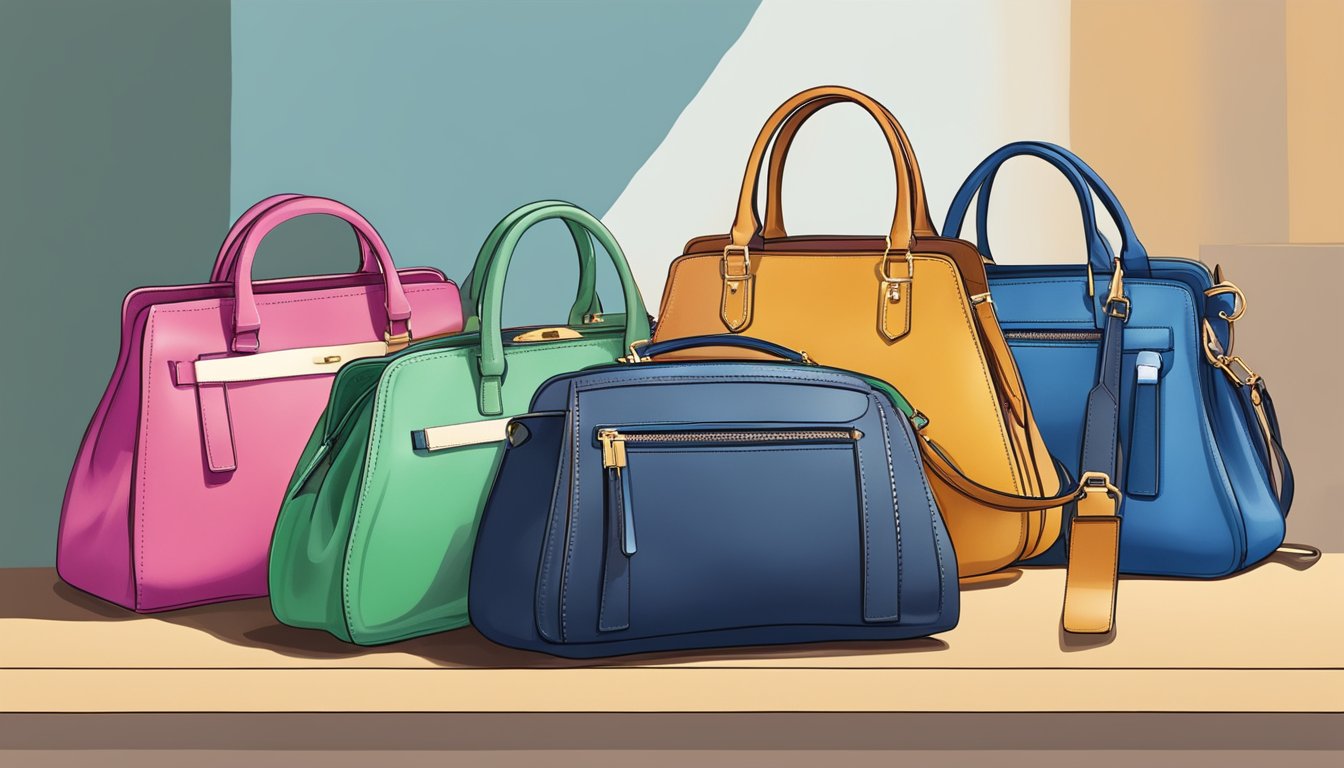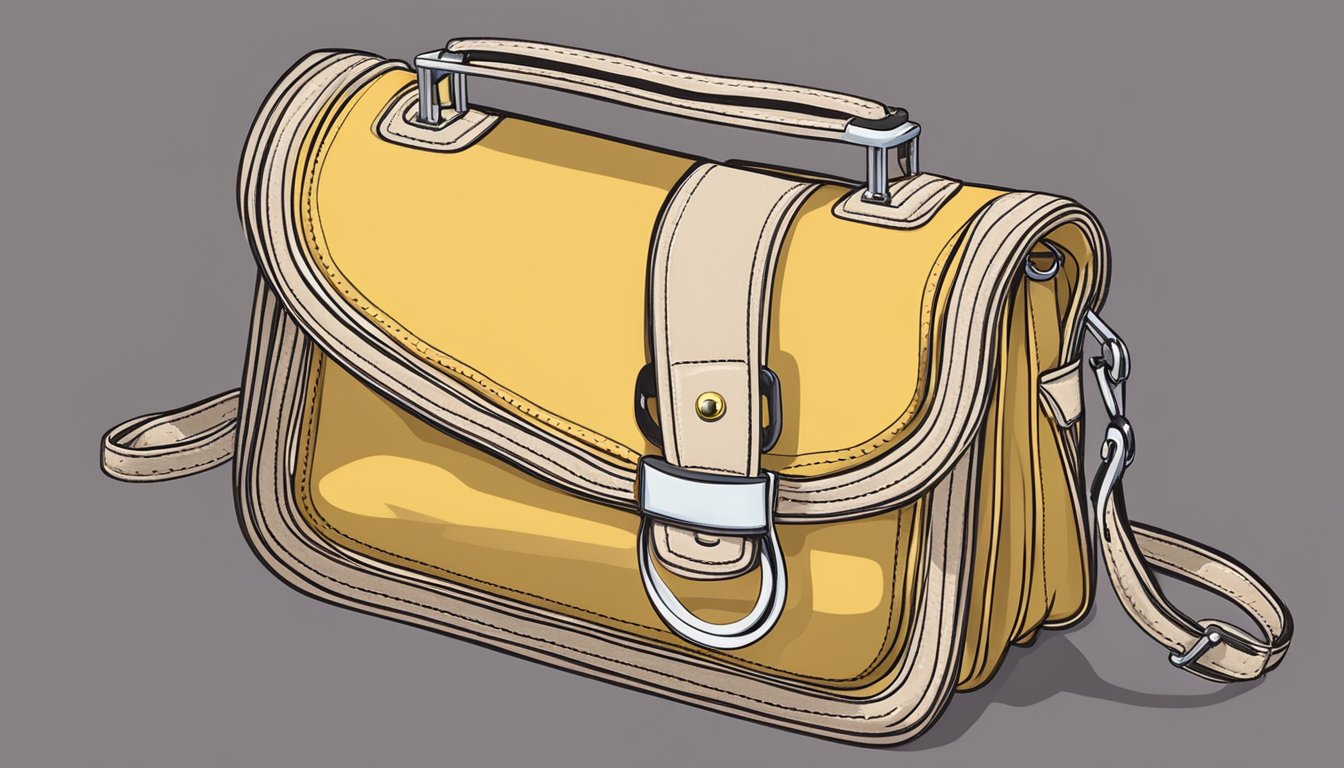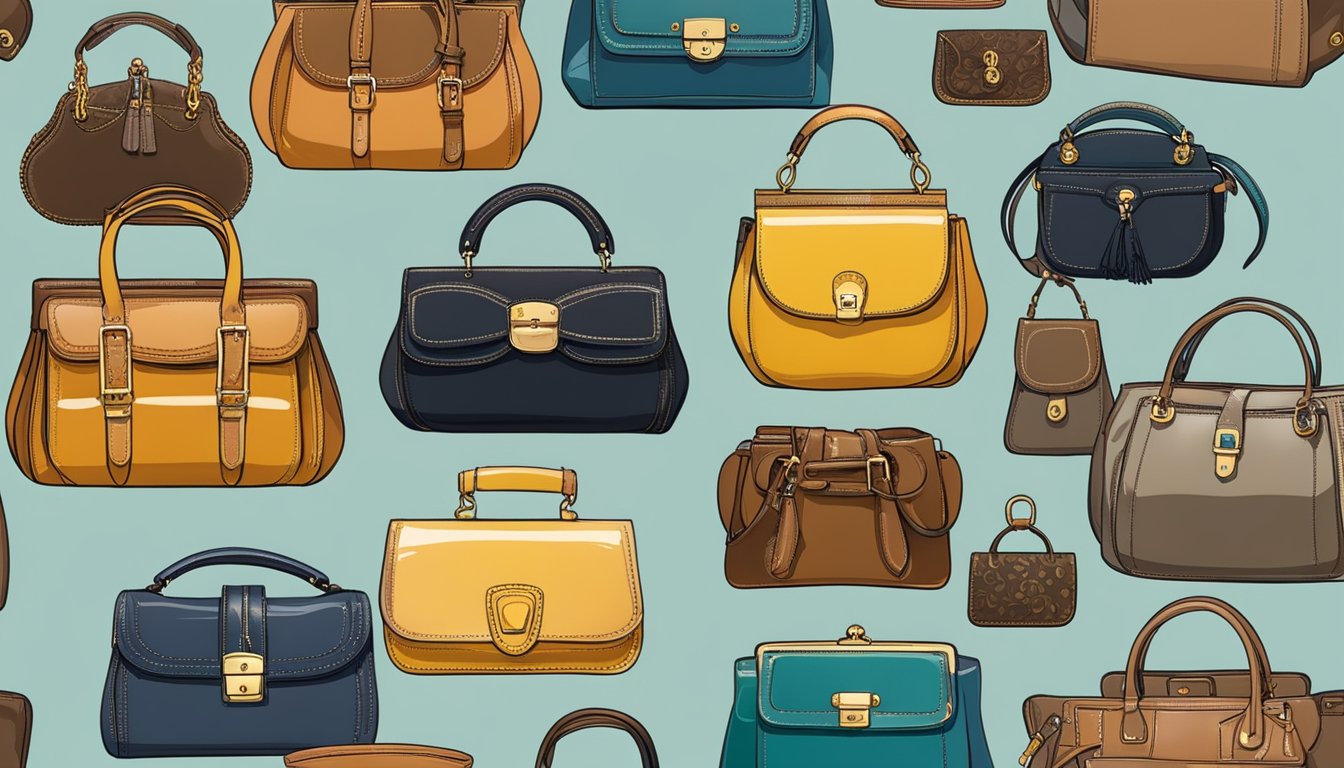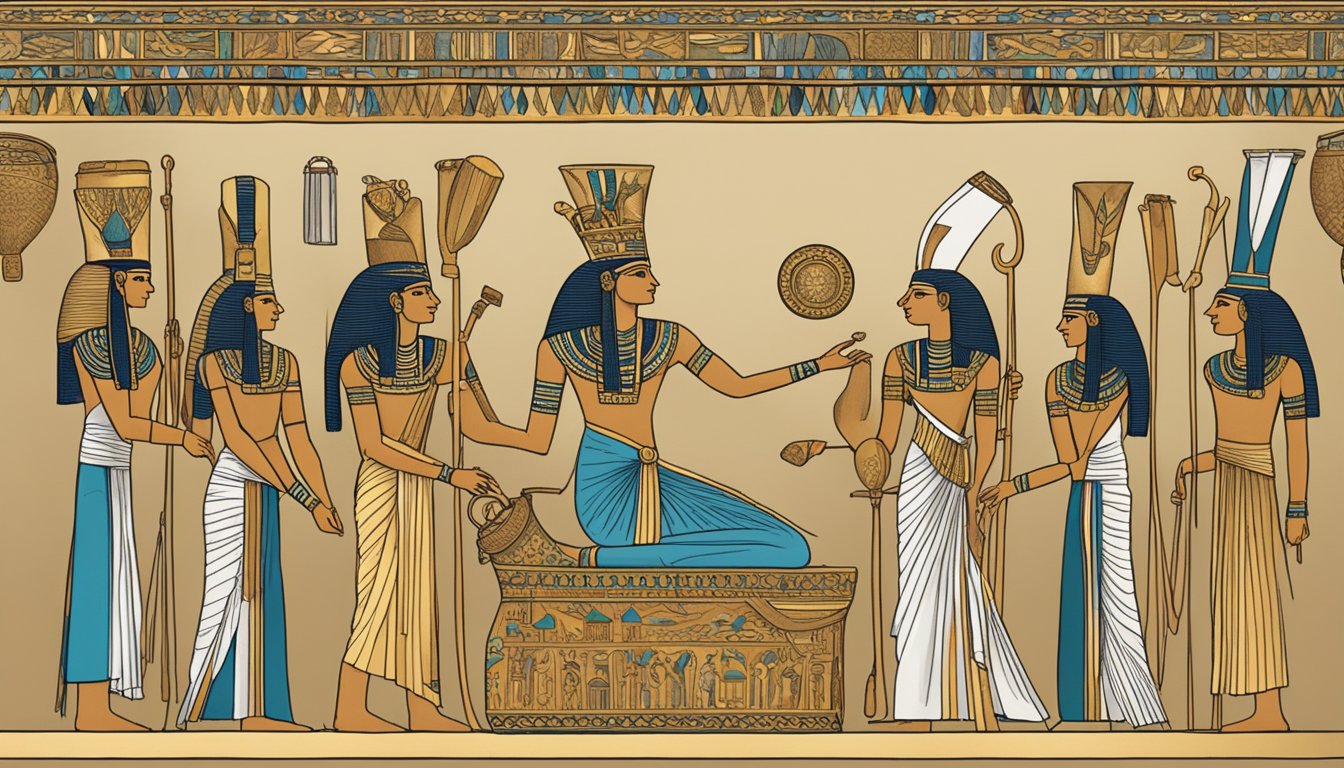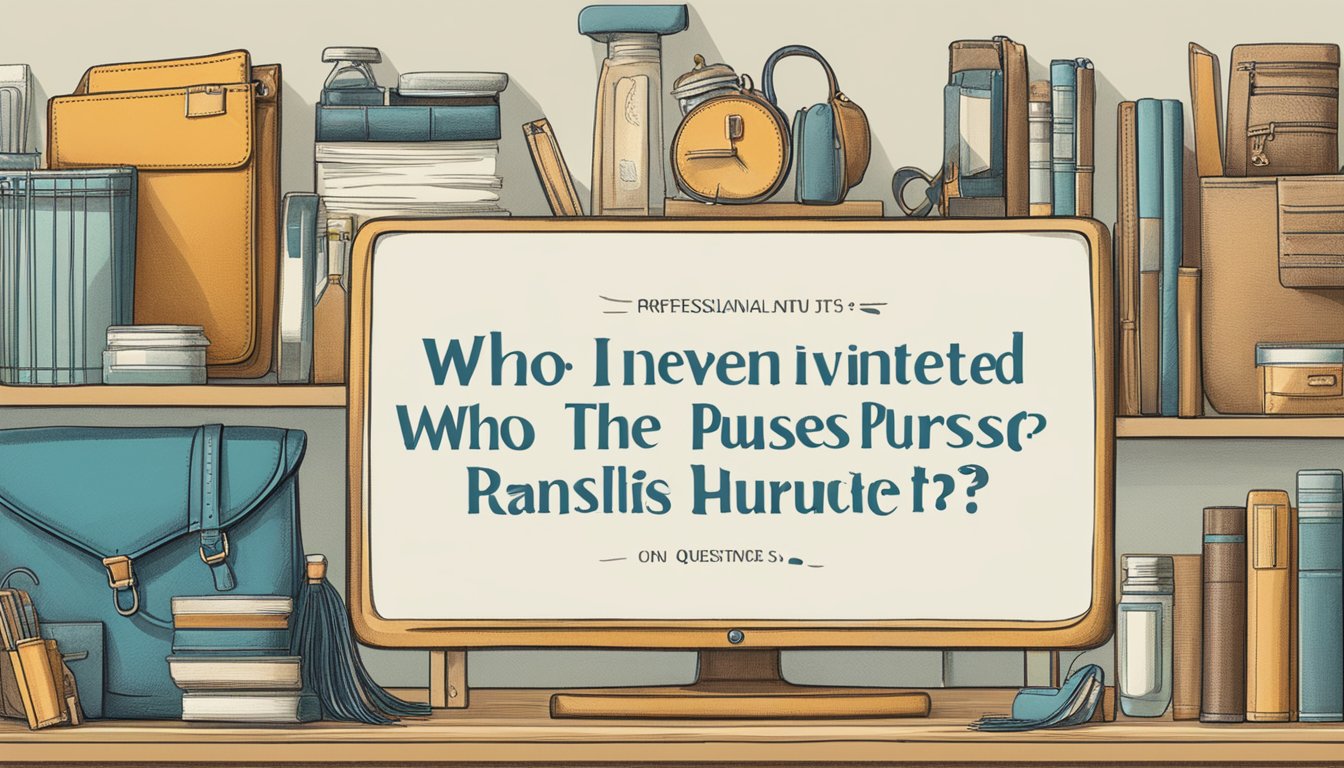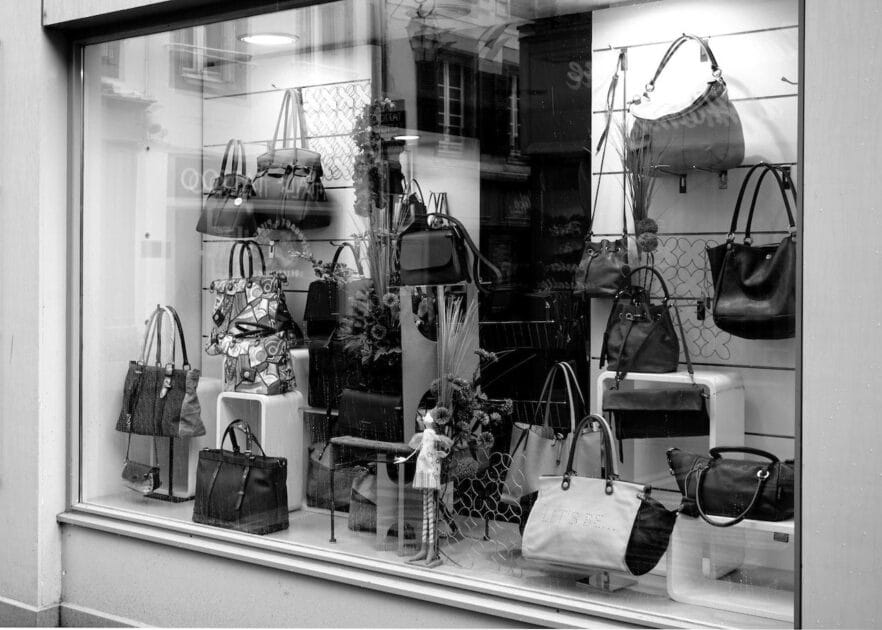Are you curious about the history of purses and who invented them? Purses have been a staple accessory for centuries, but their origins are shrouded in mystery. While it’s difficult to pinpoint the exact moment when purses were invented, we do know that they have been around for thousands of years.
Purses have evolved over time, from simple pouches used to carry coins and other small items, to the fashion statement pieces we see today. They have been made from a variety of materials, including leather, silk, and even metal. And while they were once primarily used by women, men have also adopted the use of purses in recent years.
Key Takeaways
- Purses have been around for thousands of years, but the exact moment of their invention is unknown.
- Purses have evolved from simple pouches to fashion statement pieces made from a variety of materials.
- While purses were once primarily used by women, men have also adopted their use in recent years.
The Origin of Purses

https://www.youtube.com/watch?v=25VligamBwE&embed=true
Purses have been around for thousands of years, with evidence of their use dating back to ancient times. In fact, the ancient Egyptians are known to have used pouches attached to their girdles to carry coins and other small items.
But it wasn’t just the Egyptians who used purses. Otzi the Iceman, who is Europe’s oldest natural mummy, was found in the Alps in 1991 with a handbag next to him. The bag was made out of chamois hide and had a strap attached to it. This suggests that even in ancient times, people needed a way to carry their belongings with them.
Purses have evolved over time, with different styles and materials being used. In the Middle Ages, women carried small pouches called “chatelaines” that hung from their belts. These pouches were often made of leather or fabric and were used to carry small items like keys, coins, and needles.
As time went on, purses became more elaborate and were often used as a symbol of wealth and status. In the 16th century, men in Scotland began wearing a type of purse called a “sporran.” This was a pouch that hung from a belt and was used to carry items like money and weapons.
Today, purses come in many different styles and materials, from leather to canvas to plastic. They are an essential accessory for many people, allowing them to carry their belongings with them wherever they go. Whether you prefer a small clutch or a large tote, there is a purse out there for everyone.
Purses Through the Ages
Purses have been around for centuries, evolving in shape, size, and materials used. From simple pouches to elaborate handbags, purses have been a staple accessory for both men and women.
During the Middle Ages, purses were primarily used by men to carry coins and small items. These pouches were often made of leather or fabric and were attached to a belt. In the Renaissance period, purses became more ornate and were often decorated with embroidery, jewels, or gold thread. These purses were worn by both men and women and were often attached to the waist or carried in the hand.
In the Elizabethan era, purses became a symbol of wealth and status. Women’s purses were often made of silk or velvet and were adorned with pearls, gold thread, and other precious materials. Men’s purses were often made of leather and were decorated with silver or gold buckles.
During the Industrial Revolution, purses began to take on a more practical role. With the rise of mass production, purses became more affordable and accessible to the general public. Women’s purses were often made of cotton or linen and were designed to be carried over the shoulder.
In the 1920s, purses became a fashion statement. Women’s purses were often small and compact, designed to be carried in the hand. These purses were often decorated with beads, sequins, or other embellishments.
During World War II, purses became more utilitarian. With rationing in effect, purses were often made of practical materials such as canvas or nylon. Women’s purses were often designed to be worn across the body, leaving the hands free for other tasks.
Today, purses come in a variety of shapes, sizes, and materials. From designer handbags to simple canvas totes, purses continue to be an essential accessory for both men and women.
Types of Purses and Their Evolution
https://www.youtube.com/watch?v=yGRSWEYDlWc&embed=true
Purses have been around for thousands of years, and they have gone through many changes throughout history. Here are some of the most popular types of purses and how they have evolved over time:
Pouches
Pouches were one of the earliest forms of purses. They were made from animal hides and were used by both men and women to carry small items like coins and jewelry. Pouches were typically tied around the waist or worn on a belt.
Reticules
In the 18th century, reticules became popular. These small drawstring bags were carried by women and were used to hold personal items like handkerchiefs, fans, and cosmetics. Reticules were made from a variety of materials, including silk, velvet, and leather.
Handbags
Handbags became popular in the early 20th century. These bags had a handle and were carried by hand. They were made from a variety of materials, including leather, canvas, and straw.
Shoulder Bags
« Parts of Purse: A Quick Guide to Understanding the Anatomy of Your Favorite Accessory
Protect Your Leather Purse: Tips for Long-Lasting Durability »
Shoulder bags, also known as tote bags, became popular in the 1950s. These bags had a long strap that could be worn over the shoulder. Shoulder bags were larger than handbags and were used to carry more items.
Messenger Bags
Messenger bags were originally designed for bicycle messengers in the 1950s. These bags had a long strap that could be worn across the body. They were typically made from canvas or nylon and were used to carry documents and other items.
Satchels
Satchels are similar to messenger bags, but they are smaller and have a shorter strap. They are typically made from leather and are used to carry books and other items.
Coin Purses
Coin purses are small bags that are used to hold coins. They are typically made from leather or fabric and are often used in conjunction with a larger purse.
Wallets
Wallets are used to hold cash, credit cards, and other small items. They are typically made from leather or fabric and are available in a variety of sizes and styles.
Shopping Bags
Shopping bags are large bags that are used to carry groceries and other items. They are typically made from paper or plastic and are available in a variety of sizes and styles.
Evening Bags
Evening bags are small, elegant bags that are used for formal occasions. They are typically made from silk or satin and are often embellished with beading or embroidery.
Wristlets
Wristlets are small bags that have a wrist strap. They are typically used to carry small items like a phone, keys, and a wallet. Wristlets are often made from leather or fabric and are available in a variety of styles.
Purses as a Fashion Statement
Purses have come a long way from their humble beginnings as a simple bag used for carrying coins and other small items. Today, they are an essential fashion accessory for women worldwide. Not only do they serve a practical purpose, but they also make a statement about your personal style.
Fashion is all about expressing yourself, and your choice of purse is no different. From bold prints to classic designs, there is a purse out there to suit every taste. Some people prefer to stick to classic designs, while others like to experiment with new trends and styles.
Purses are also a luxury item, and owning a designer purse is a status symbol. The elite and wealthy often use purses to show off their wealth and exclusivity. Designer purses are expensive, but they are also well-made and often made from high-quality materials.
In addition to being a fashion statement, purses are also practical. They allow you to carry all your essential items with you, such as your phone, wallet, and keys. They come in a range of sizes and styles, so you can choose one that suits your needs.
In conclusion, purses are an essential fashion accessory that serves both a practical and stylish purpose. They are a luxury item that can be used to show off your wealth and status, and they come in a range of styles to suit every taste. Whether you prefer classic designs or bold prints, there is a purse out there for you.
Material and Design in Purses
Purses have come a long way since their inception, and their material and design have evolved over time. The earliest purses were made of linen, silk, and leather. The leather purses were often adorned with gold ornaments and were used by the wealthy and royalty. Later on, embroidery became popular, and purses were decorated with intricate designs and patterns.
In the 20th century, plastic became a popular material for purses due to its durability and affordability. However, many people still prefer leather purses due to their timeless appeal and durability. Cotton and wood have also been used in purse design, but they are not as common as leather or plastic.
The frame of a purse is also an important aspect of its design. Metal frames were popular in the 19th century, while iron frames were used in the early 20th century. Nowadays, purses come in a variety of frame styles, including clasp, zipper, and snap closures.
The design of purses has also evolved over time. In the early days, purses were often simple pouches with drawstring closures. As fashion evolved, so did purse design. Today, purses come in a variety of shapes, sizes, and styles, including shoulder bags, crossbody bags, and clutch purses.
Overall, the material and design of purses have evolved over time to meet the changing needs and preferences of consumers. Whether you prefer a classic leather purse or a trendy plastic clutch, there is a purse out there for everyone.
Notable Designers and Iconic Purses
When it comes to purses, there are a few designers and iconic bags that come to mind. Here are some notable designers and their most famous creations:
Louis Vuitton
Louis Vuitton is a French designer known for creating luxury leather goods, including purses. The brand’s signature monogram pattern is recognizable around the world. One of their most iconic bags is the Speedy, first introduced in the 1930s. Today, the Speedy remains a popular bag and has been reimagined in various sizes and colors.
Chanel
Chanel is another French designer that has made a significant impact on the fashion world. The brand’s classic flap bag, introduced in the 1950s, is a timeless piece that continues to be a popular choice for many women. The bag features the brand’s signature quilting and chain strap.
Gucci
Gucci is an Italian designer that has been around since the early 1900s. One of their most famous bags is the Jackie, named after Jackie Kennedy Onassis. The bag was first introduced in the 1960s and has since been reimagined in various colors and materials.
Birkin Bag by Hermès
The Birkin bag, created by Hermès, is one of the most coveted bags in the world. The bag was named after actress and singer Jane Birkin, who was on a flight with the CEO of Hermès and mentioned that she was having trouble finding a good leather weekend bag. The CEO offered to create a bag for her, and the rest is history. The Birkin bag is known for its high price tag and long waiting lists.
Fendi
Fendi is an Italian designer known for their luxury leather goods. One of their most famous bags is the Baguette, introduced in the 1990s. The bag is named after the French bread and is designed to be carried under the arm like a baguette.
It Bags
Over the years, there have been several “it bags” that have captured the attention of fashion lovers around the world. These bags are often associated with a particular designer or brand and are highly sought after. Some examples of it bags include the Gucci Dionysus, the Chanel Boy Bag, and the Louis Vuitton Neverfull.
In conclusion, there have been many designers and iconic purses throughout history. Whether you prefer a classic style or something more modern, there is a purse out there for everyone.
Purses and Gender
https://www.youtube.com/watch?v=FSGK6xnE0cA&embed=true
Purses have been associated with women for centuries, but this was not always the case. In ancient times, both men and women used pouches or bags to carry their personal belongings. However, as time passed, the use of purses became more gender-specific.
During the Middle Ages, men carried purses as a symbol of wealth and power. These purses were often adorned with precious stones and metals and were worn on a belt around the waist. In fact, the term “pocketbook” originally referred to a small bag that men carried in their pockets.
In the 16th century, men’s purses became smaller and were worn as a fashion accessory. However, by the 17th century, pockets had become more common in men’s clothing, and the use of purses declined among men.
On the other hand, women’s purses became more elaborate and decorative during the 18th and 19th centuries. They were often made of luxurious materials such as silk, velvet, and leather, and were embellished with embroidery, beads, and other decorations.
The man-purse, also known as the “murse,” has made a comeback in recent years. It is now more socially acceptable for men to carry purses, and many designers have started creating purses specifically for men. These purses are often made of leather and have a more rugged and masculine look.
In conclusion, while purses were once used by both men and women, they have become more gender-specific over time. Women’s purses have become a fashion accessory, while men’s purses are now more utilitarian in nature. However, with the rise of the man-purse, the line between gender-specific purses is becoming increasingly blurred.
Purses and Their Practical Uses
When you think of purses, you might imagine a stylish accessory to complete your outfit. But purses have been around for centuries and were originally created for practical purposes.
One of the earliest uses of purses was to carry personal items such as combs, cosmetics, and handkerchiefs. In ancient times, people would carry small pouches made of leather or cloth to hold these items.
As currency became more prevalent, purses evolved to hold coins and other forms of money. The ancient Greeks used leather bags called byrsa as coin pouches, which is where the English word “purse” comes from. Drawstring purses were also popular, as they could be worn close to the body and kept in folds of clothing for added security.
Purses also had secret compartments for storing valuable items. For example, during the Renaissance, women would carry a small purse called a “swete bag” that had a hidden compartment for holding sweet-smelling herbs or flowers.
Today, purses continue to serve practical purposes, such as holding your phone, wallet, and keys. But they also make a fashion statement and can be a reflection of your personal style. Whether you prefer a classic leather tote or a trendy crossbody bag, there’s a purse out there for everyone.
Purses in Popular Culture and History
Purses have been an essential accessory in fashion and culture for centuries. They have been used by both men and women to carry personal belongings, money, and other items. Throughout history, purses have been associated with different meanings and symbols.
One of the earliest known examples of a purse was found in Egypt, dating back to the 14th century BCE. It was made of leather and had a drawstring closure. In the Middle Ages, purses were worn as a sign of wealth and status. They were often embroidered with gold and silver thread and decorated with precious stones.
In the 19th century, Samuel Parkinson invented the first modern handbag. It was designed to be carried by women and was made of leather with a metal frame. The bag had a compartment for carrying money and was secured with a clasp.
Purses have also played a significant role in popular culture. Winston Churchill was known to carry a leather dispatch case as his version of a purse. Margaret Thatcher was famous for carrying a black leather handbag during her time as Prime Minister of the UK. The handbag became a symbol of her authority and power.
Purses have also been featured in many love stories and betrothal traditions. In some cultures, the groom presents a purse to the bride as a symbol of his commitment to providing for her. In others, the bride carries a purse filled with herbs and spices to ward off evil spirits.
Unfortunately, purses have also been associated with dementia in recent years. People with dementia may misplace or forget their purses, causing them to become disoriented and anxious. Family members and caregivers can help by labeling the purse with the owner’s name and contact information.
In conclusion, purses have a rich history and cultural significance. They have evolved over time and have become an essential accessory in fashion and everyday life.
Conclusion
In conclusion, the history of purses and handbags is a long and fascinating one. From the earliest days of humanity, people have used pockets, pouches, and bags to carry their belongings. Over time, these accessories have evolved to become more than just functional items, but also status symbols and fashion statements.
The modern handbag is the result of centuries of innovation and design. From the drawstring purse of ancient Rome to the medieval purses worn on girdles, handbags and purses have been an essential accessory for both men and women throughout history.
Today, designer handbags are a popular and coveted item, with many people willing to pay large sums of money for the latest styles. However, it is important to remember that handbags are not just a modern invention but have been a part of human culture for thousands of years.
Whether you prefer a small clutch or a large tote, a vintage relic or a modern bag, purses and handbags will continue to be an important accessory for people all over the world. So next time you reach for your favorite handbag, remember the long and fascinating history behind this essential accessory.
Frequently Asked Questions
What is the history of handbags?
Handbags have been used for centuries to carry personal items. The earliest handbags were simple pouches made of animal skin or cloth. In the 16th century, men used leather book bags to carry bulky items such as books, documents, and letters. Women’s handbags became popular in the 19th century, and they were typically small and carried only a few personal items.
Who is credited with inventing the modern handbag?
The modern handbag was invented by French fashion designer Coco Chanel in the 1920s. She created a small, elegant handbag that could be carried over the shoulder, freeing up the hands for other activities.
When did handbags become popular?
Handbags became popular in the 19th century when women began to carry personal items with them. Prior to that time, women carried their personal items in pockets or small pouches. In the 20th century, handbags became an important fashion accessory for women.
What are some common features of designer handbags?
Designer handbags often feature high-quality materials, such as leather or exotic skins, and intricate designs. They may also have unique hardware, such as clasps or zippers, and may be embellished with jewels or other decorative elements.
How have handbags evolved over time?
Handbags have evolved from simple pouches to complex and ornate fashion accessories. They have become larger and more functional, with multiple compartments and pockets to hold personal items. Designer handbags have become status symbols, and many people collect them as investments.
Why are handbags important fashion accessories?
Handbags are an important fashion accessory because they can enhance an outfit and express a person’s sense of style. They can also be functional, providing a convenient way to carry personal items. Designer handbags are often associated with luxury and status, making them highly sought after by fashion-conscious consumers.

